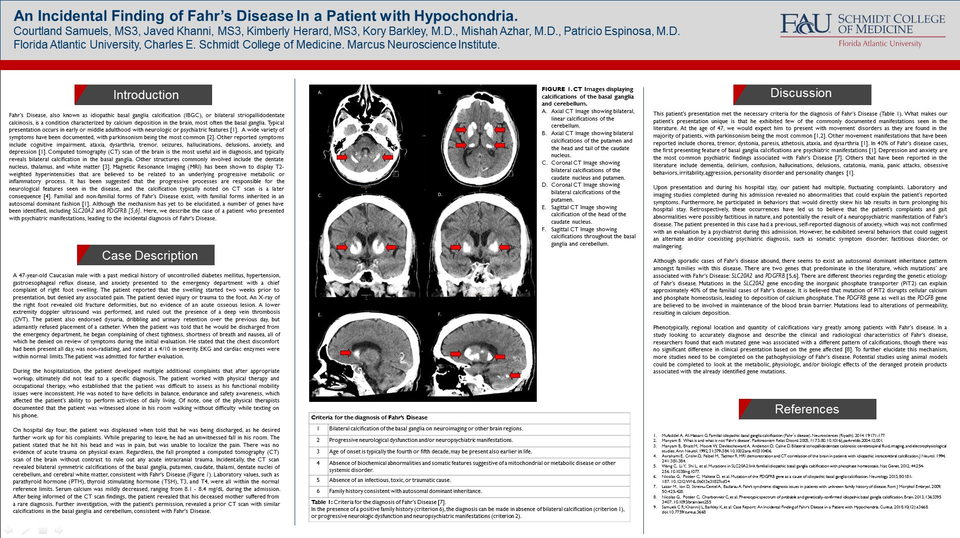Abstract
Idiopathic basal ganglia calcification (IBGC), commonly referred to as Fahr’s disease, is a rare neurological disorder characterized by the abnormal, symmetrical, and bilateral calcification of the basal ganglia and other brain regions. Patients typically present in their forties and fifties with various neurologic and/or psychiatric symptoms, including movement disorders, Parkinsonism, psychosis, and depression.
The pathophysiology of this disease is not completely understood; however, several gene mutations have been identified in the pathogenesis of Fahr’s disease. These mutations display an autosomal dominant inheritance pattern. Furthermore, the regional phenotypic expression of calcifications differs greatly from patient to patient, as do their clinical presentations. Here, we describe a patient who presented with psychiatric manifestations and imaging consistent with Fahr’s disease.





